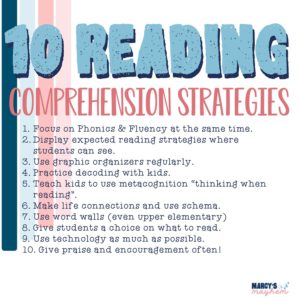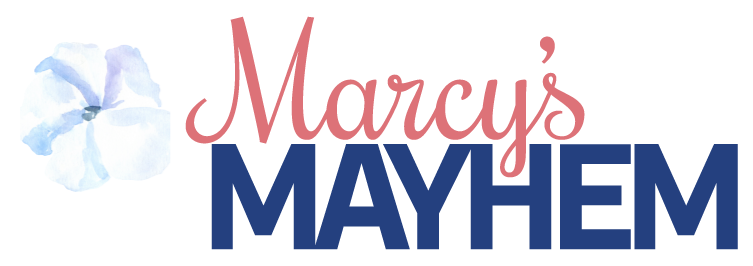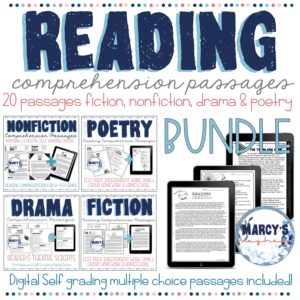When it comes to reading strategies, I like to keep things short, sweet, and effective. Having too many reading strategies can confuse kids, and it is hard for teachers to model constantly. Below is a list of 10 reading comprehension strategies that I like to use in the classroom.

10 READING COMPREHENSION STRATEGIES
- Phonics & Fluency – These two go hand in hand, focusing on them simultaneously.
- Display Reading Strategies – This seems so simple. When it comes to using reading strategies, my classroom uses the phrase when we read; we take a trip. Introduce this saying early in the school year to practice using it all school year long. Inside this reading strategies activity, students can see each step, create a pennant, and have a bookmark listing each step.
- Use graphic organizers regularly– This is super helpful, especially for struggling readers. Plus, there are graphic organizers for almost everything when doing a quick Google search.
- Practice Decoding – This sounds like something for younger students, but it is not. As a student’s vocabulary increases, model decoding to help with challenging words.
- Teach Reading is Thinking– When reading aloud, model what it looks like to think while reading text and show students what appropriate thinking looks like. Encourage students to pay attention to their thoughts as they read. This is also a great time to model how to steer back to the text when your mind drifts.
- Make life connections & use schema – Another excellent time to model. Making connections when you read aloud to kids is beneficial to the reader. Also, explain schema throughout the school year. I tell kids schema is like invisible file folders inside your brain that is full of knowledge.
- Use Word Walls– Yup, even in upper elementary. Think of all the great vocabulary words that students learn. This is also a great time to model using context clues in sentences. Have slips of paper ready for your kids, and once the class learns the word, a student can add the word to the wall.
- Give Students a Choice– While there is some text that students have to read, most of their independent reading materials should be their choice. Have reading conferences when kids silently read to help them find books and text written by authors they love. Also show kids how to find books on topics that they want to learn more about.
- Technology– Use it as much as possible. There are tons and tons of reading resources online that students can use. Having kids read comprehension passages online is a more fun way to be able to check their understanding.
- Encourage– Kids respond to encouragement! Give praise and compliments as much as possible.
READING COMPREHENSION PRACTICE
These reading comprehension passages are an excellent way for upper elementary students to get practice. The resource contains printable & digital options for kids to show what they know. This product contains the reading comprehension strategies for FREE that is mentioned above.

